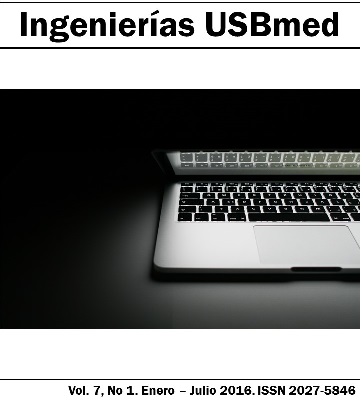This journal provides immediately free access to its contents under the principle that make available the research results for free to the public, helps for a greater global exchange of knowledge.
Therefore, the journal invokes the Creative Commons 4.0
License attributions: Recognition – Non-commertial - Share equal. Commercial use and distribution of original or derivative works are not permitted and must be done with a equal license as the one that regulate the original work.
Abstract
Se denomina radiación solar a los conjuntos de radiaciones electromagnéticas emitidas por el sol. Esta energía juega un papel determinante en diversos procesos en la biosfera, siendo uno de los factores importantes en los cambios de clima terrestre. Teniendo en cuenta sus beneficios, también existen los daños que puede causar en animales, plantas y humanos al tener una exposición prolongada. En las últimas dos décadas, se comprobó una disminución gradual de la capa de ozono estimada de 0.4 s 0.5 % por año. En búsqueda de una respuesta sobre el nivel de daño y su dinamismo estacional sobre una región del norte del Perú es por el cual se realiza el análisis del comportamiento del índice de radiación ultravioleta (UV-B). Los resultados, representan una herramienta y una alerta a fin de informar a la población sobre las formas de cómo evitar los problemas e impactos en la piel.
References
[2] Herman, Jay., Matthew R. Hudson, Rich, Mc Peters, Stolarski, Richard, Ahmad, Ziauddin Gu, X. Y., Taylor, S and Wellemeyer, C.A. “New Self-Calibration Method Applied to TOMS and SBUV Backscattered Ultraviolet Data to Determine Long-Term Global Ozone Change”, En J. Geophys. Res., Vol. 96, pp. 7531-7545.1991
[3] Herman, Jay. R., Rich. McPeters and DLarko. “Ozone Depletion at Northern and Southern Latitudes Derived from January 1979 to November 1991, Total Ozone Mapping Spectrometer”, En J. Geophys. Res., Vol. 98, pp. 12783.1993.
[4] D. Bojkov Rumen., Lane. Bishop and Vitali.E. Fioletov;..“Total Ozone Trends from Quality-Controlled Ground Base Data (1964-1994)”, En J. Geophys. Res., Vol. 100, pp. 25867-25876, 1995
[5] Tevini, Manfred.; “UV-B Radiation and Ozone Depletion.Effects on Humans, Animals, Plants, Microorganism and Materials”. Chapter 4 in UV-B radiation and ozone depletion: ed. pp. 95-123. Ann Arbor: Lewis Publishers, 1993..
[6] Grant, Richard. H., Gordon. M. Heisler, and Guan. Gao. Clear sky radiance distributions in ultraviolet wavelength bands. J. Theor. and Applied Climatol. Vol. 56, pp.123-135, 1997.
[7] Norris, P G, Hawk J L, “Polymorphic light eruption. Photodermatol Photoimmunol”. En Photomed. 7(5) pp. 186-191, 1990..
[8] Clydesdale Gavin, J, Dandie Geoffrey W, Muller H.Konrad, “Ultraviolet light induced injury: immunological and inflammatory effects”. En Immunol Cell Biol. 79, pp. 547-568, 2001..
[9] Fisher, Gary.J, “The pathophysiology of photoaging of the skin”. En Cutis. 75: pp. 5-8, 2005[7] Norris, P G, Hawk J L, “Polymorphic light eruption. Photodermatol Photoimmunol”. En Photomed. 7(5) pp. 186-191, 1990..
[10] Claerhout, Sofie, Van Laethem. Aethema A, Agostinis Patrizia, Garmyn Marian, “Pathways involved in sunburn cell formation: Deregulation in skin cancer”. En Photochem. Photobiol. Sci. 5: pp.199-207, 2006...
[11] Gallagher, Richard. P, Lee T. K. Adverse effects of ultraviolet radiation: a brief review. Prog. Biophys. Mol. Biol. 92: pp.119-131, 2006...
[12] De Gruijl. Frank R, Photo carcinogenesis: “UVA vs. UVB radiation”. En Skin Pharmacol Appl Skin Physiol 15: pp. 316-320, 2002.
[13] González, Pumariega, Maribel, Vernhes, Tamayo. Marioly. Sánchez, Lamàr. Ángel, “La Radiación Ultravioleta. Su Efecto Dañino y Consecuencias Para La Salud Humana”. En Theoria, Vol. 18 (2), pp. 69-80, 2009.
[14] Tortora, Gerard, y Gravoski, Sandra Reynols. Principios de Anatomía y Fisiología. 11 Edición. Editorial Médica Panamericana, pp. 550, 1993.
[15] Sánchez, Saldaña, L. Radiación ultravioleta y cáncer a la piel. Dermatología Peruana, Vol 19(4) 305, 2009.
[16] Valverde-López, Jenny., Querevalú-Eche, Félix., Tincopa-Wong, Oscar. “Photodermatosis-Clinical and Epidemiologic Traits in a General Hospital”. En Dermatol Perú 15(2), pp.113-120, 2005.
[17] Moncada, Jiménez. José: La Radiación Ultravioleta y la Piel del Deportista. En Redalic. http://www.redalyc.org/articulo.oa?id=44027211, 1993.. Última consulta 25 julio de 2013.
[18] OMS. Las radiaciones ultravioleta y la salud humana. Nota descriptiva N° 305.. Disponible en http://www.who.int/mediacentre/factsheets/fs305/es, 2005.. Última consulta, 25 de Julio de 2013.
[19] INEI. Censos Nacionales XI de Población y VI de Vivienda, 21 de octubre del 2007, Perú: Resultados Definitivos, Tomo I. Lima septiembre del 2008.
[20] L. Holdridge,.,Ransselaer.. «Life Zone Ecology».Tropical Science Center. San José, Costa Rica. (Traducción del inglés por Humberto Jiménez Saa: «Ecología Basada en Zonas de Vida», 1a. ed. San José, Costa Rica: IICA, pp. 149. 1982. Disponible en http://cct.or.cr/publicaciones/Life-Zone-Ecology.pdf. Última consulta 1 Agosto de 2013.

 Perfil Google Scholar
Perfil Google Scholar













